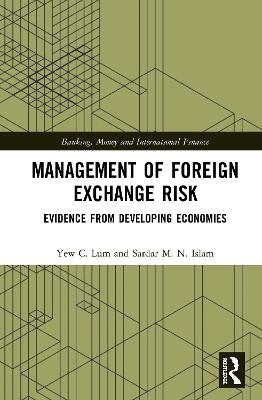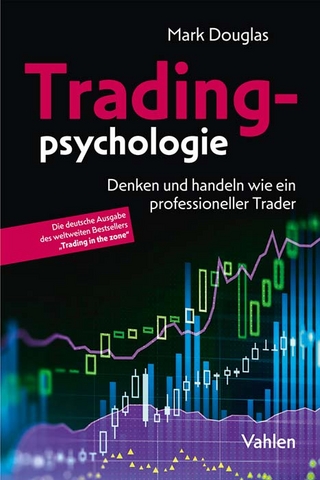
Management of Foreign Exchange Risk
Evidence from Developing Economies
Seiten
2020
Routledge (Verlag)
978-0-367-41857-1 (ISBN)
Routledge (Verlag)
978-0-367-41857-1 (ISBN)
This book provides a technical and specialized discussion of contemporary and emerging issues in FOREX and financial markets by addressing the issues of risk management and theory and hypothesis development, which have general implications for finance theory and FOREX market management.
This book provides a technical and specialised discussion of contemporary and emerging issues in foreign exchange and financial markets by addressing the issues of risk management and theory and hypothesis development, which have general implications for finance theory and foreign exchange market management. It offers an in-depth, comprehensive analysis of the issues concerning the volatility of exchange rates.
The book has three main objectives. First, it applies the integrated study of exchange rate volatility in terms of depth and breadth. Second, it applies the integrated study of exchange rate volatility in Malaysia, as a case study of a developing country. Malaysia had imposed capital control measures in the past and has now liberalised its exchange rate market and will continue to liberalise it further in the long run. Hence, the need to understand exchange rate volatility measurement and management will be even more important in the future. Third, the book highlights new conditional volatility models for a developing country, such as Malaysia, and develops advanced econometric models which have produced results for sound risk management strategies and for achieving risk management in the financial market and the economy. Additionally, the authors recommend risk management themes which may be of relevance to other developing countries.
This work can be used as a reference book by fund managers, financial market analysts, researchers, academics, practitioners, policy makers and postgraduate students in the areas of finance, accounting, business and financial economics. It can also be a supplementary text for Ph.D. and Masters’ students in these areas.
This book provides a technical and specialised discussion of contemporary and emerging issues in foreign exchange and financial markets by addressing the issues of risk management and theory and hypothesis development, which have general implications for finance theory and foreign exchange market management. It offers an in-depth, comprehensive analysis of the issues concerning the volatility of exchange rates.
The book has three main objectives. First, it applies the integrated study of exchange rate volatility in terms of depth and breadth. Second, it applies the integrated study of exchange rate volatility in Malaysia, as a case study of a developing country. Malaysia had imposed capital control measures in the past and has now liberalised its exchange rate market and will continue to liberalise it further in the long run. Hence, the need to understand exchange rate volatility measurement and management will be even more important in the future. Third, the book highlights new conditional volatility models for a developing country, such as Malaysia, and develops advanced econometric models which have produced results for sound risk management strategies and for achieving risk management in the financial market and the economy. Additionally, the authors recommend risk management themes which may be of relevance to other developing countries.
This work can be used as a reference book by fund managers, financial market analysts, researchers, academics, practitioners, policy makers and postgraduate students in the areas of finance, accounting, business and financial economics. It can also be a supplementary text for Ph.D. and Masters’ students in these areas.
Yew C. Lum is a Senior Lecturer in Finance and Coordinator of Faculty and Student Services Committee at Xiamen University Malaysia. Sardar M. N. Islam is currently a Professor of Economic Studies, and has also been a Professor of Business, Economics and Finance (2007–2017) at Victoria University, Melbourne, Australia.
1. Strategic Overview 2. Exchange-rate Risk Management and Modelling 3. Exchange-rate Risk and Economic Liberalisation 4. Volatility Modelling of Exchange-rates in a Univariate Framework 5. Volatility Modelling of Exchange-rates in a Multivariate Framework 6. Concluding Remarks
| Erscheinungsdatum | 04.09.2020 |
|---|---|
| Reihe/Serie | Banking, Money and International Finance |
| Zusatzinfo | 21 Tables, black and white; 55 Line drawings, black and white; 55 Illustrations, black and white |
| Verlagsort | London |
| Sprache | englisch |
| Maße | 156 x 234 mm |
| Gewicht | 453 g |
| Themenwelt | Wirtschaft ► Betriebswirtschaft / Management ► Finanzierung |
| Betriebswirtschaft / Management ► Spezielle Betriebswirtschaftslehre ► Bankbetriebslehre | |
| Wirtschaft ► Betriebswirtschaft / Management ► Unternehmensführung / Management | |
| Wirtschaft ► Volkswirtschaftslehre | |
| ISBN-10 | 0-367-41857-6 / 0367418576 |
| ISBN-13 | 978-0-367-41857-1 / 9780367418571 |
| Zustand | Neuware |
| Haben Sie eine Frage zum Produkt? |
Mehr entdecken
aus dem Bereich
aus dem Bereich
warum unser Geld stirbt und wie Sie davon profitieren
Buch | Hardcover (2024)
FinanzBuch (Verlag)
30,00 €
denken und handeln wie ein professioneller Trader
Buch | Softcover (2023)
Vahlen, Franz (Verlag)
36,90 €


